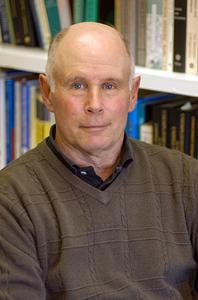February 25, 2010
As the Great Recession continues into 2010, one of its defining characteristics is persistent unemployment. Walter Nicholson, the Ward H. Patton Professor of Economics, is a leading expert on unemployment insurance systems, which not only help laid-off workers but also prop up economies by helping to replace lost purchasing power. (View some of his research on this topic). He recently spoke with Director of Public Affairs Peter Rooney about when the U.S. unemployment insurance system was established, whether it’s working and how it could be improved. Listen to portions of their conversation below:
What are the strengths and weaknesses of our current unemployment insurance system?
 |
I think the strength is that it’s pretty universal. It covers almost everyone who loses a job, which means lots of unemployed workers are covered, about 6 to 7 million in all. The problem is that its strength is its weakness, because it’s only oriented toward people who lose jobs. Other causes of unemployment are not covered.
The main other causes of being unemployed are if you’ve entered the labor force without having had a job previously, either as young person or as someone who’s re-entered after not having had a job for several years. Other parts of the labor force not covered include self-employed people and some agriculture jobs.
The national unemployment rate was exactly 10 percent in December. How significant is that double-digit figure?
The 10 percent is high. The only time we’ve been that high in the post-World War II period was in the early ’80s. We were going along at a 3- or 4-percent unemployment rate, and suddenly it ballooned to 10, so that’s pretty significant.
Can you help deconstruct that 10 percent figure? What does it count? What does it miss?
The standard definition of unemployed is the one provided by the U.S. Census. It has two criteria: (1) you don’t have a job, and (2) you’re looking for work.
Both of those criteria are controversial. You’re not counted as unemployed if you’re working only a few hours a week while you’re looking for work. And you’re not counted if you don’t have a job and have given up looking for work. Those people are termed discouraged workers.
The problem is [that] if you depart from those definitions, you get into all sorts of conceptual problems. For example, if you say anyone without a job is unemployed, that’s clearly wrong, because of the 60 million retired people in the U.S. So you need some test of whether you’re in the labor force or not.
If there is one major finding from economic theory that could be applied to the unemployment insurance system to improve it, what would it be?
Well, there are two. One is to acknowledge the incentive effects of the benefits structure and adjust it accordingly. For example, extensive research shows that people stay unemployed longer if they receive benefits longer. We’re now providing 100 weeks of benefits, and that’s uncharted territory.
The other is the incentive effect of the tax structure. Firms appear to be much more willing to lay off workers than they used to be. Maybe at the government level we should be concerned about that and try to provide some incentive for employers not to lay off workers so readily in a recession. Making firms pay more of the actual cost of unemployment insurance would be a way to do that.
I read in one of your papers from 2008 that the system of unemployment insurance that exists today in the United States was developed during the 1930s, and that the system’s basic structure has remained essentially unchanged. Is that still the case?
It’s true that the state systems of unemployment benefits have been relatively unchanged over a long period of time. Then there’s the federal extension of those benefits, and that comes into play during recessions. Those federal benefits have changed significantly over time in response to recessions. The state programs have a maximum of 26 weeks, and the federal government currently has extended that to about 100 weeks.
Is there wide variation on the level of state unemployment benefits?
Yes. Every state has its own program, and they operate under quite different procedures. The main ways they differ are in benefit generosity and in eligibility: who qualifies for unemployment benefits and who doesn’t.
Some economists say that we may experience a “jobless recovery,” or that many of the jobs that have been lost will not reappear. What’s your take on the relationship between economic recovery and job creation?
Job recovery always comes late in a recession because firms don’t start rehiring until the recession is pretty well over. I don’t think the current absence of jobs is unusual, and I don’t see any historical reason to worry about the return of jobs. It may be slow, but once the private sector starts moving again, jobs will come back.